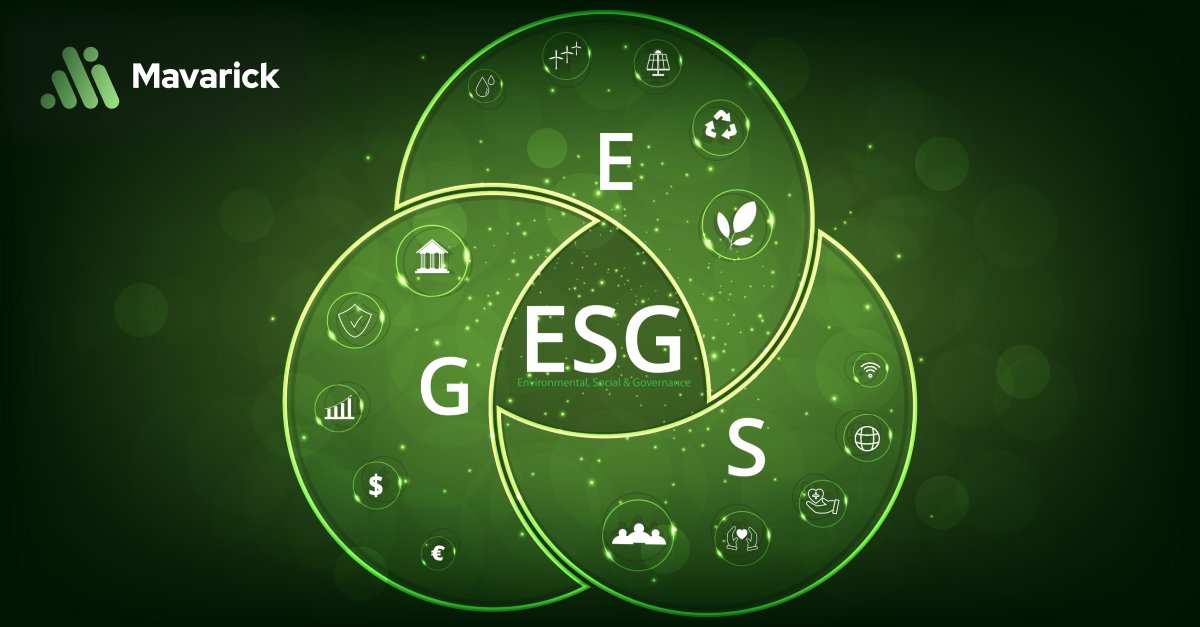
Table of Contents
- Enhancing Scope 3 Reporting Through ESG Frameworks
- Strategic Benefits of ESG Policies
- ESG Policies Supporting Scope 3 Reporting
- Why are Scope 3 Emissions Crucial in ESG Reporting?
- 1. Driving Climate Goals
- 2. Investor and Stakeholder Pressure
- 3. Compliance with Global Frameworks
- Categories of Scope 3 Emissions
- Challenges in Measuring Scope 3 Emissions
- 1. Data Collection Complexity
- 2. Lack of Standardisation
- 3. Supplier Collaboration
- Solutions for Effective Scope 3 Reporting
- 1. Automating Data Collection
- 2. Supplier Engagement
- 3. Leveraging Technology and Analytics
- Best Practices for Scope 3 Emissions Reporting
- Case studies
- 1. Manufacturing Sector
- 2. Retail Industry
- The Role of Mavarick in Scope 3 Reporting
- Conclusion
- Frequently Asked Questions (FAQs)
In the world of Environmental, Social, and Governance (ESG) reporting, Scope 3 emissions represent the most complex yet impactful category of greenhouse gas (GHG) emissions. Unlike Scope 1 and Scope 2, which cover direct emissions and those from purchased energy, Scope 3 encompasses all other indirect emissions in a company’s value chain. This includes emissions from suppliers, product use, waste disposal, and transportation, among others.
Understanding Scope 3 emissions is crucial for organisations aiming to improve their ESG performance and meet global climate goals. Studies indicate that Scope 3 emissions often contribute up to 90% of a company’s total carbon footprint, making them a priority in sustainable business strategies. Companies implementing advanced carbon accounting methodologies have successfully streamlined data collection processes, much like those outlined in industry case studies on tackling Scope 3 emissions effectively.

Enhancing Scope 3 Reporting Through ESG Frameworks
Effective ESG policies provide the foundational structure for addressing Scope 3 emissions. By integrating sustainability goals directly into corporate governance and operations, businesses can more effectively:
- Identify Emission Sources: ESG frameworks help pinpoint high-emission activities within Scope 3 categories, such as purchased goods, transportation, and product use, aligning with the strategies discussed in sustainable supply chain management studies.
- Standardise Data Collection: Many ESG policies align with global standards like the GHG Protocol, enabling consistency and accuracy in Scope 3 reporting. The use of carbon accounting software ensures comprehensive emissions tracking and analysis.
- Promote Collaboration: ESG policies encourage collaboration across value chains, helping companies work with suppliers and stakeholders to track and reduce emissions. Implementing robust supplier engagement initiatives has proven to significantly improve reporting accuracy.
Strategic Benefits of ESG Policies
Aligning Scope 3 reporting with ESG policies not only ensures compliance with global frameworks but also enhances corporate reputation. Stakeholders increasingly demand transparency in environmental impact, and robust ESG strategies demonstrate a company’s commitment to sustainability. Many companies that proactively manage their environmental impact leverage industry best practices in energy efficiency and resource management, significantly improving operational sustainability.

ESG Policies Supporting Scope 3 Reporting
Comprehensive ESG policies serve as a roadmap for businesses to address Scope 3 emissions effectively. Policies that outline clear sustainability goals and actionable measures drive systematic changes, such as:
- Supplier Engagement Initiatives: Policies emphasising supplier transparency and collaboration help gather accurate data on purchased goods and services.
- Operational Improvements: ESG-driven operational policies streamline processes, reducing waste and emissions across the value chain.
- Governance Standards: Strong governance frameworks ensure that Scope 3 reporting is embedded into decision-making, fostering long-term compliance and sustainability.
The Science Based Targets initiative (SBTi) requires companies to incorporate Scope 3 targets as part of their ESG commitments. Organisations adopting such practices often report increased operational efficiency and improved investor confidence.
Why are Scope 3 Emissions Crucial in ESG Reporting?
1. Driving Climate Goals
To align with the Paris Agreement’s objective of limiting global warming to 1.5°C, companies must address their full carbon impact, including Scope 3. Businesses operating within high-emission sectors, such as automotive manufacturing and energy-intensive industries, have adopted innovative methods to enhance carbon neutrality and emission reduction efforts.
2. Investor and Stakeholder Pressure
Investors and stakeholders are increasingly scrutinising ESG metrics, particularly Scope 3 emissions, due to their significant environmental impact. Transparent and data-driven ESG reporting has become a key differentiator in corporate sustainability performance, reinforcing the importance of automated reporting solutions.
3. Compliance with Global Frameworks
Many regulatory bodies and ESG frameworks, including the GHG Protocol, the Science Based Targets initiative (SBTi), and CDP, require or encourage companies to disclose Scope 3 emissions. Ensuring adherence to evolving compliance standards has been a focal point for businesses aiming to navigate the complexities of carbon disclosure regulations.

Categories of Scope 3 Emissions
Scope 3 emissions are divided into 15 categories as defined by the GHG Protocol, covering upstream and downstream activities. Key categories include:
- Purchased Goods and Services
- Capital Goods
- Transportation and Distribution (Upstream and Downstream)
- Waste Generated in Operations
- Use of Sold Products
- End-of-Life Treatment of Sold Products
- Employee Commuting
- Business Travel
A complete list can be found in the GHG Protocol Scope 3 Standard.
Challenges in Measuring Scope 3 Emissions
1. Data Collection Complexity
Scope 3 emissions span across a company’s entire value chain, requiring detailed data from multiple sources. For example, data from suppliers on raw material usage or from logistics partners on fuel consumption may not always be readily available.
2. Lack of Standardisation
While frameworks like the GHG Protocol provide guidance, there’s often variability in how companies measure and report Scope 3 emissions, making benchmarking difficult.
3. Supplier Collaboration
Engaging suppliers to disclose emissions data is one of the biggest hurdles. Many suppliers lack the infrastructure or resources to track and share this data accurately. Read more on effective strategies in our supplier engagement blog.
Solutions for Effective Scope 3 Reporting
1. Automating Data Collection
Automated data collection is key to improving ESG and carbon emissions reporting, reducing manual errors, and ensuring real-time accuracy. AI-powered platforms, like Mavarick, take this a step further by integrating directly with supply chain systems, making Scope 3 data collection seamless and reliable. With automation handling complex emissions tracking, businesses can focus on strategic sustainability goals rather than struggling with fragmented data. Learn more about how Mavarick simplifies Scope 3 reporting here.
2. Supplier Engagement
Proactively engaging with suppliers is essential for improving the quality of Scope 3 data. Sharing best practices, setting expectations, and leveraging industry initiatives like CDP’s Supply Chain Program can yield significant results.
3. Leveraging Technology and Analytics
Implementing carbon accounting software enables businesses to automate data tracking, minimize errors, and unlock valuable insights for more effective decision-making. By streamlining emissions reporting, companies can enhance accuracy, improve compliance, and drive meaningful sustainability outcomes.
Best Practices for Scope 3 Emissions Reporting
- Prioritise High-Impact Categories: Focus on categories that contribute the most to your emissions.
- Set Science-Based Targets: Align your reduction targets with SBTi recommendations.
- Engage with Stakeholders: Collaborate with suppliers, employees, and customers to identify and implement emission reduction strategies.
- Audit and Verify: Regularly audit your Scope 3 emissions data to ensure accuracy and compliance.

Case studies
1. Manufacturing Sector
The manufacturing sector faces unique challenges in Scope 3 emissions reporting due to its reliance on extensive supply chains. For detailed examples, visit our blog: Scope 3 Emissions Examples in Manufacturing.
2. Retail Industry
Retail companies often focus on emissions from purchased goods and services, as well as transportation. Retail giant Walmart has achieved substantial reductions in Scope 3 emissions by working with suppliers to improve energy efficiency.
The Role of Mavarick in Scope 3 Reporting
Comprehensive ESG reporting platforms provide businesses with the tools necessary to overcome the complexities of Scope 3 emissions. By combining advanced analytics, real-time data tracking, and seamless integration with supply chain systems, organisations can:
- Enhance the accuracy of emissions reporting.
- Meet regulatory and stakeholder expectations.
- Set and achieve ambitious sustainability goals.
- Many companies leveraging digital transformation in ESG reporting have observed substantial improvements in compliance adherence and environmental performance.
Conclusion
Scope 3 emissions are integral to ESG reporting and represent a significant opportunity for businesses to lead in sustainability. By adopting comprehensive ESG policies, companies can tackle the complexities of Scope 3 reporting, streamline data collection, and align with global climate goals. Leveraging technology-driven solutions has proven instrumental in enhancing emissions transparency and compliance.
Addressing Scope 3 emissions is no longer optional for businesses committed to sustainability. Accurate measurement and reporting of these emissions not only improve ESG scores but also drive real-world environmental impact. By embracing industry best practices and leveraging digital innovations, companies can tackle the complexities of Scope 3 emissions and pave the way for a sustainable future.
Take the first step towards seamless and accurate Scope 3 reporting. Get in touch with us today to discover how automation can streamline your ESG data management and enhance sustainability efforts.

Frequently Asked Questions (FAQs)
1. What are Scope 3 emissions, and why are they important?
Scope 3 emissions encompass all indirect greenhouse gas (GHG) emissions in a company’s value chain, beyond direct operations (Scope 1) and purchased energy (Scope 2). These emissions, which can make up 70-90% of a company’s total carbon footprint, are crucial to achieving net-zero targets and ensuring full accountability in ESG reporting.
2. How do Scope 3 emissions impact ESG reporting?
Since Scope 3 emissions cover supplier emissions, product lifecycle impacts, and other indirect sources, they significantly affect ESG performance. Transparent reporting of these emissions demonstrates corporate responsibility, enhances investor trust, and ensures alignment with global sustainability frameworks like the GHG Protocol and Science-Based Targets initiative (SBTi).
3. What are the main challenges of measuring Scope 3 emissions?
The biggest hurdles in Scope 3 reporting include data collection complexity, lack of standardisation, and supplier collaboration. Many businesses struggle to access reliable data from their supply chains and align reporting methodologies with global standards.
4. How can companies improve Scope 3 data collection?
Companies can enhance data collection by leveraging automation tools, engaging suppliers through structured programs, and adopting ESG and carbon accounting software. AI-driven platforms like Mavarick streamline data tracking, reduce manual errors, and provide actionable insights to improve reporting accuracy.
5. What strategies help businesses reduce Scope 3 emissions?
Effective strategies include supplier engagement, setting science-based reduction targets, optimising transportation and logistics, improving product lifecycle sustainability, and using carbon accounting software to monitor progress. Businesses that proactively address Scope 3 emissions gain a competitive edge in ESG performance.
Carbon Accounting System
Carbon Emissions Reporting for the Supply Chain
- Visible Supply Chain
- Quality Data You can Trust
- Auditable Reports

